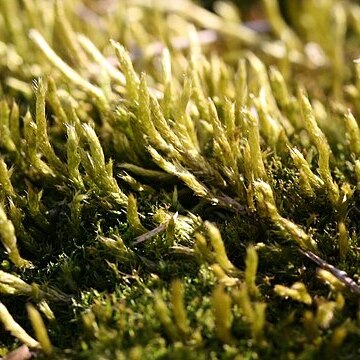Autoecious, fairly strong, in yellowish tufts; stems 1-2 inches long, suberect, pinnately or somewhat irregularly branched; the branches short and mostly simple; leaves 2-3 mm long; those on the main stem wide; shortly ovate acuminate with long, narrow, dentate point, usually 2-plicate, concave, pellucid, strongly decurrent, with almost invisible nerve reaching about half-way; margin expanded, toothed from near the base or sometimes only dentate late; areolation exceedingly lax; lamina cells widely linear, 100 x 12 µ, gradually reduced at the base to quadrate or oblong cells 35-40 x 20 µ, these cells connecting with the stem at the corners. Branch leaves shorter, narrower concave-cochleate, not plicate, more strongly toothed. Perichaetium sessile, small-leaved, the leaves ovate-acuminate spreading widely or reflexed, nerveless, laxly areolated, margin denticulate. Seta 2 cm long, red, smooth; capsules brown, thick-skinned, much inclined, very irregular; outer teeth shortly lanceolate, closely barred, smooth; teeth as high, on high membrane, with short slender cilia.

